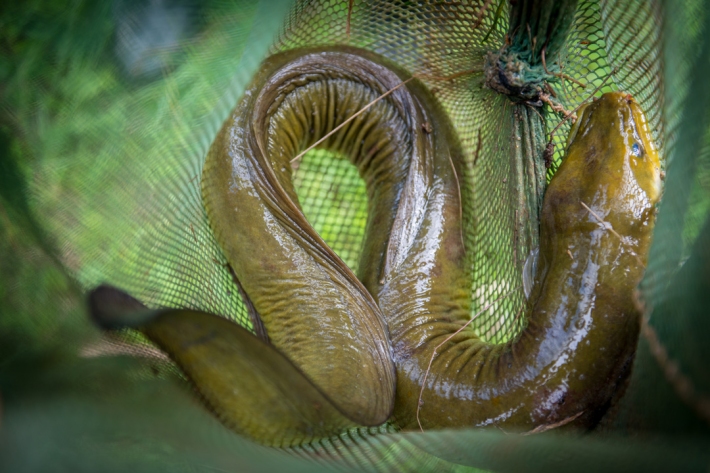Fish are identified by both their common name and a scientific (or Latin) name. The use of scientific names is encouraged because each one is unique to a single species. Common names can be confusing because they may change from place to place and/or refer to a number of fish species.
For example, what we call inanga in New Zealand is called the common jollytail or common galaxias in Australia and the puyen in South America. But it is known as Galaxias maculatus in all countries where it occurs. Similarly, inanga has been used historically in New Zealand as a collective name to refer to other whitebait-like species including smelt and koaro.
Scientific names consist of two words, the genus and the species. The generic name (or genus) helps determine its relationship to other species. In New Zealand, there are many species of Galaxias, and this tells us that these fish all have no scales and resemble each other more closely than fish from other genera. The second (or specific) name often tells us something about the unique features of that species. For example, the scientific name of the longjaw galaxias is Galaxias prognathus, with 'gnathos' being the latin name for a jaw and 'pro' referring to its forward position. The correct way to write a scientific name is to write it in italics. The generic name starts with a capital letter, but the specific name is in lower case.
To assist you to correctly identify species, a range of 'quick guides' for identifying fish in the field is provided (see links below). These single-sheet guides are designed to be downloaded, laminated and used in the field. However, not all fish can be identified using these quick guides and some specimens may require identification using formal keys and microscopic examination in a laboratory. The formal keys are provided below.
Field guides (quick guides)
- Fish families (PDF 137 KB)
- Adult galaxiids (PDF 133 KB)
- Juvenile galaxiids (PDF 54 KB)
- Bullies (PDF 97 KB)
Formal Keys
Related links
-

NIWA Atlas of NZ Freshwater Fishes
To find out more about the New Zealand freshwater fishes, the Atlas of NZ Freshwater Fishes provides an overview of the freshwater fish found in New Zealand, fact sheets for each species and links to other resources.
